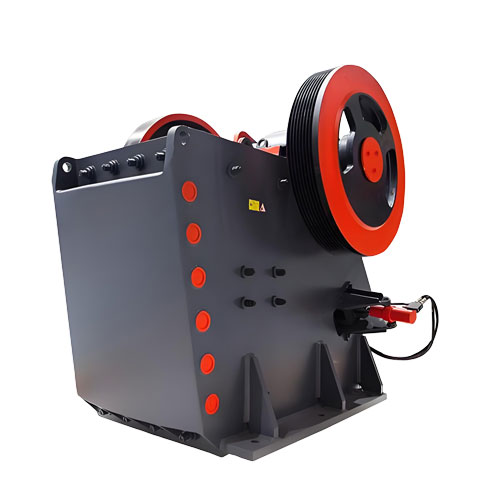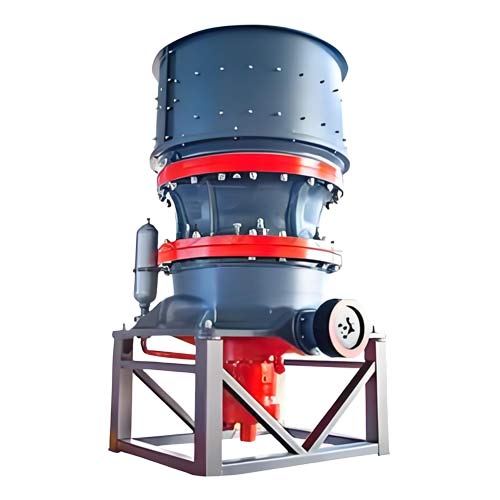What is a cone crusher?
If you’ve ever been involved in mining, construction, or aggregate production, you’ve likely heard the term “cone crusher.” But what exactly is this powerful machine, and how does it turn massive rocks into the perfectly sized gravel, sand, and dust needed for countless projects?
In simple terms, a cone crusher is a heavy-duty machine that reduces the size of materials through compression. It’s a vital piece of equipment in the comminution (rock-breaking) process, sitting between a primary jaw crusher and tertiary crushers or screens to achieve a finely crushed product.

The Core Principle: Compression Crushing
Unlike the hammering action of an impact crusher, a cone crusher operates on the principle of compression. Two essential parts make this happen:
-
The Mantle: A moving piece mounted on an eccentric shaft that gyrates (swings in a circular path) within the crusher.
-
The Concave: A stationary, durable liner that forms the crushing chamber.
As rocks enter the top of the crusher, they are squeezed and crushed between the gyrating mantle and the stationary concave. This continuous compression and grinding action breaks the rock down until it’s small enough to fall through the gap at the bottom, known as the closed-side setting (CSS).
Key Components of a Cone Crusher
To understand its operation, it helps to know its main parts:
-
1. Main Frame: The robust outer structure that houses all the components.
-
2. Eccentric Assembly: The heart of the crusher. This assembly causes the mantle to gyrate, creating the crushing motion.
-
3. Crushing Chamber: The space between the mantle and concave where the rock is compressed.
-
4. Drive System: Typically an electric motor connected via belts and pulleys or a direct drive system to power the eccentric.
-
5. Feed Distribution Plate: Ensures that incoming material is evenly distributed around the crushing chamber for uniform wear and efficient operation.
-
6. Adjustment Ring: Allows operators to raise or lower the concave, changing the CSS to control the final product size.
-
7. Hydraulic System: Provides the power for clamping, adjustment, and, crucially, for clearing the chamber in case of a blockage (a feature known as “tramp release”).

Types of Cone Crushers
Cone crushers are generally categorized by their application and the speed at which the mantle gyrates:
-
Spring Cone Crusher: An older design that uses springs to provide overload protection. Less common in modern large-scale operations.
-
Hydraulic Cone Crusher: The modern standard. It uses hydraulic systems for all key functions, including adjustment, clearing blockages, and overload protection. They are further divided into:
-
Multi-Cylinder Hydraulic Cone Crusher: Ideal for secondary crushing (producing a medium-fine product). They are known for their high efficiency and ability to handle hard and abrasive materials.
-
Single-Cylinder Hydraulic Cone Crusher: Often used for tertiary or quaternary crushing (producing a very fine product). They have a simpler design and are excellent for shaping and producing high-quality sand.
-
What are Cone Crushers Used For?

Cone crushers are incredibly versatile and are used in a wide range of industries:
-
Mining: Crushing ore to extract valuable minerals like copper, gold, and iron.
-
Aggregate Production: Creating crushed stone, sand, and gravel for use in concrete, asphalt, and road base.
-
Quarrying: Processing rock extracted from a quarry into various sizes for construction.
-
Recycling: Sometimes used for crushing demolition concrete and asphalt.
Advantages of Using a Cone Crusher
-
1. High Efficiency: They provide a continuous crushing action with high capacity.
-
2. Low Operating Costs: While the initial investment can be high, their efficiency and durability lead to a lower cost per ton of material crushed.
-
3. Versatile Product Size: By simply adjusting the CSS, operators can produce different product sizes to meet specific specifications.
-
4. Robust and Reliable: Built to handle the toughest materials with minimal downtime.
Conclusion
A cone crusher is far more than just a big, loud machine. It’s a precision-engineered piece of technology that plays a fundamental role in building the world around us. From the foundations of our homes to the roads we drive on, the consistent, high-quality aggregate produced by cone crushers is an essential ingredient in modern infrastructure. By understanding its basic principles and components, you can appreciate the engineering marvel that turns rugged rock into the building blocks of our society.
Related Products
Inquiry
Please leave us your requirements, we will contact you soon.





